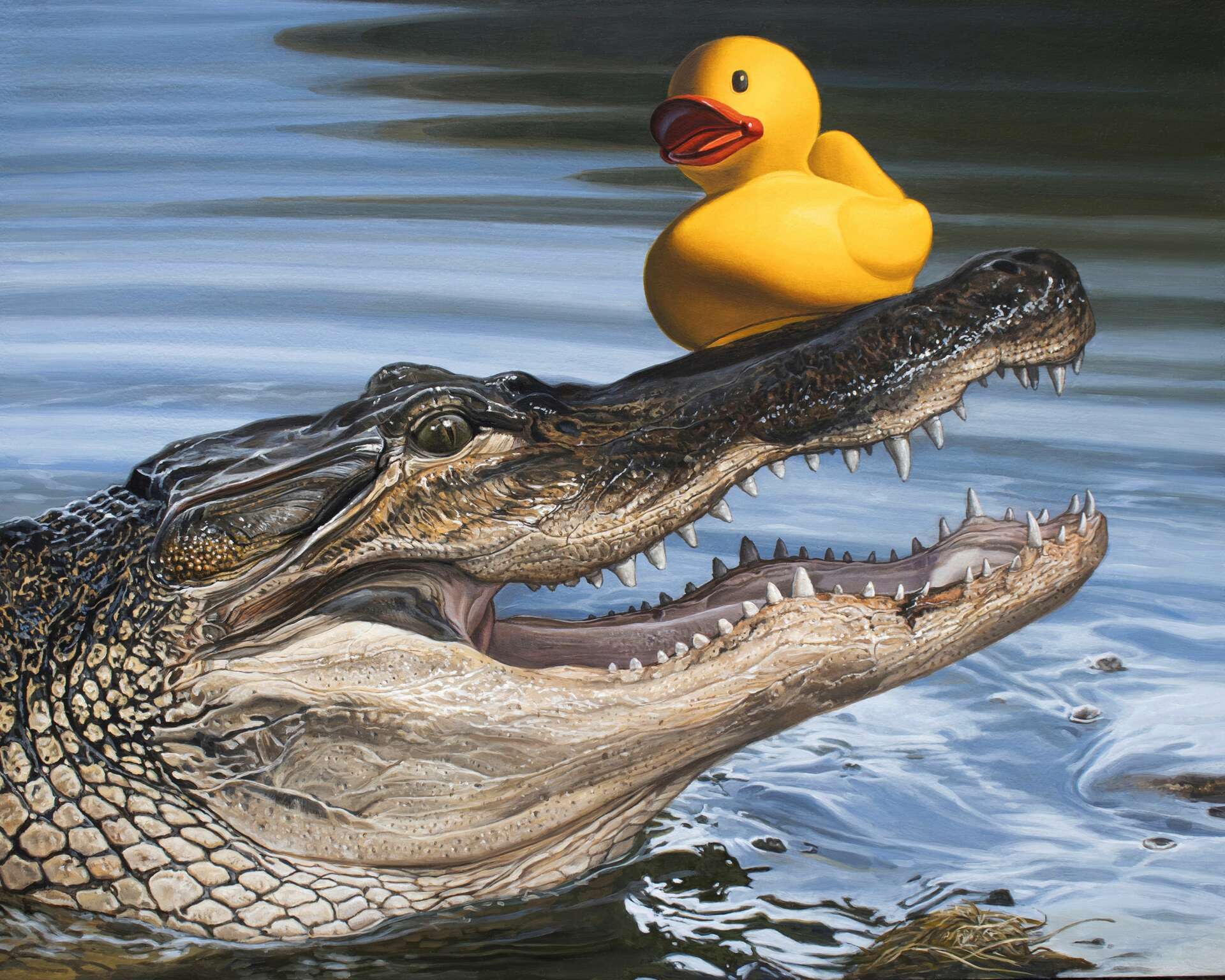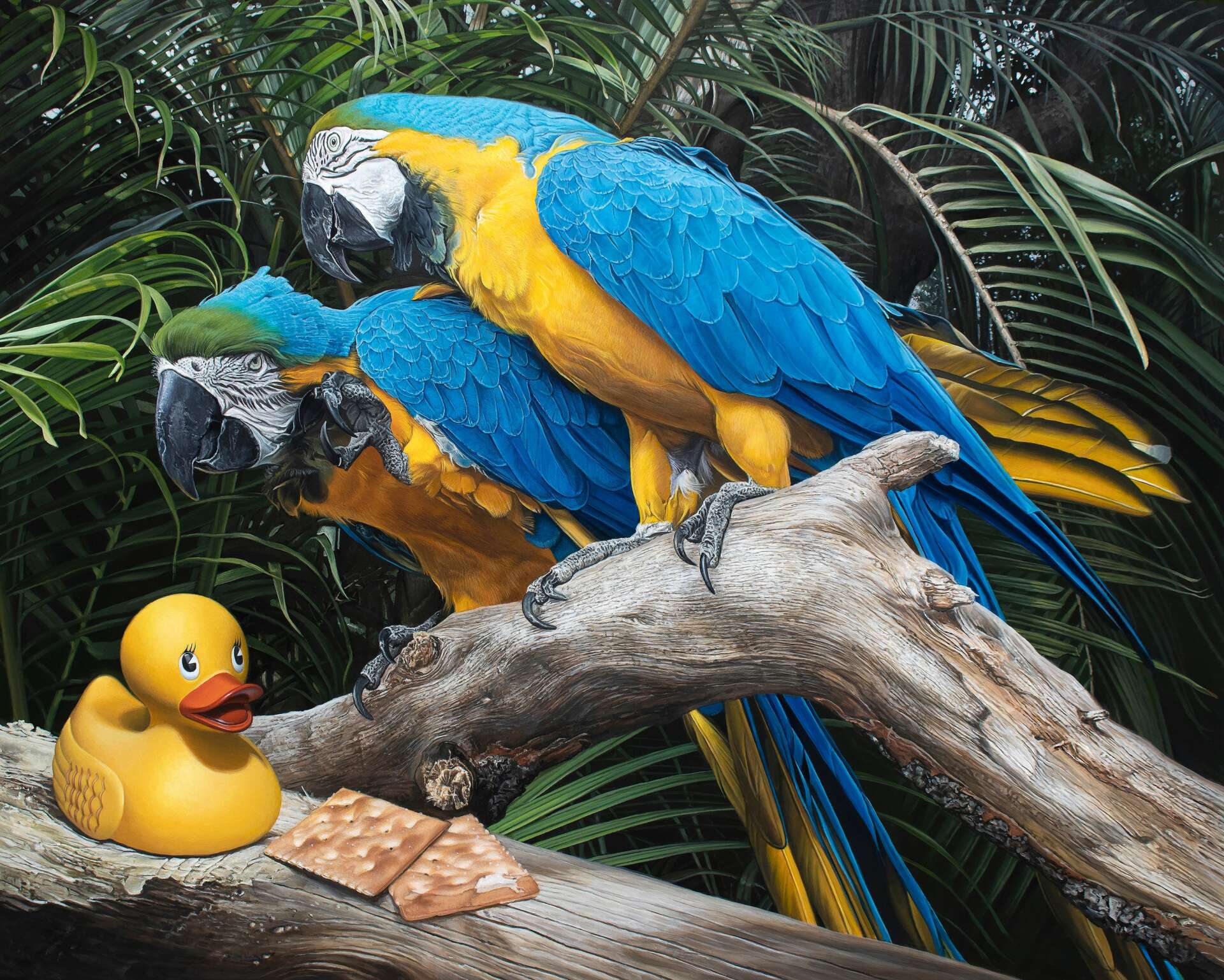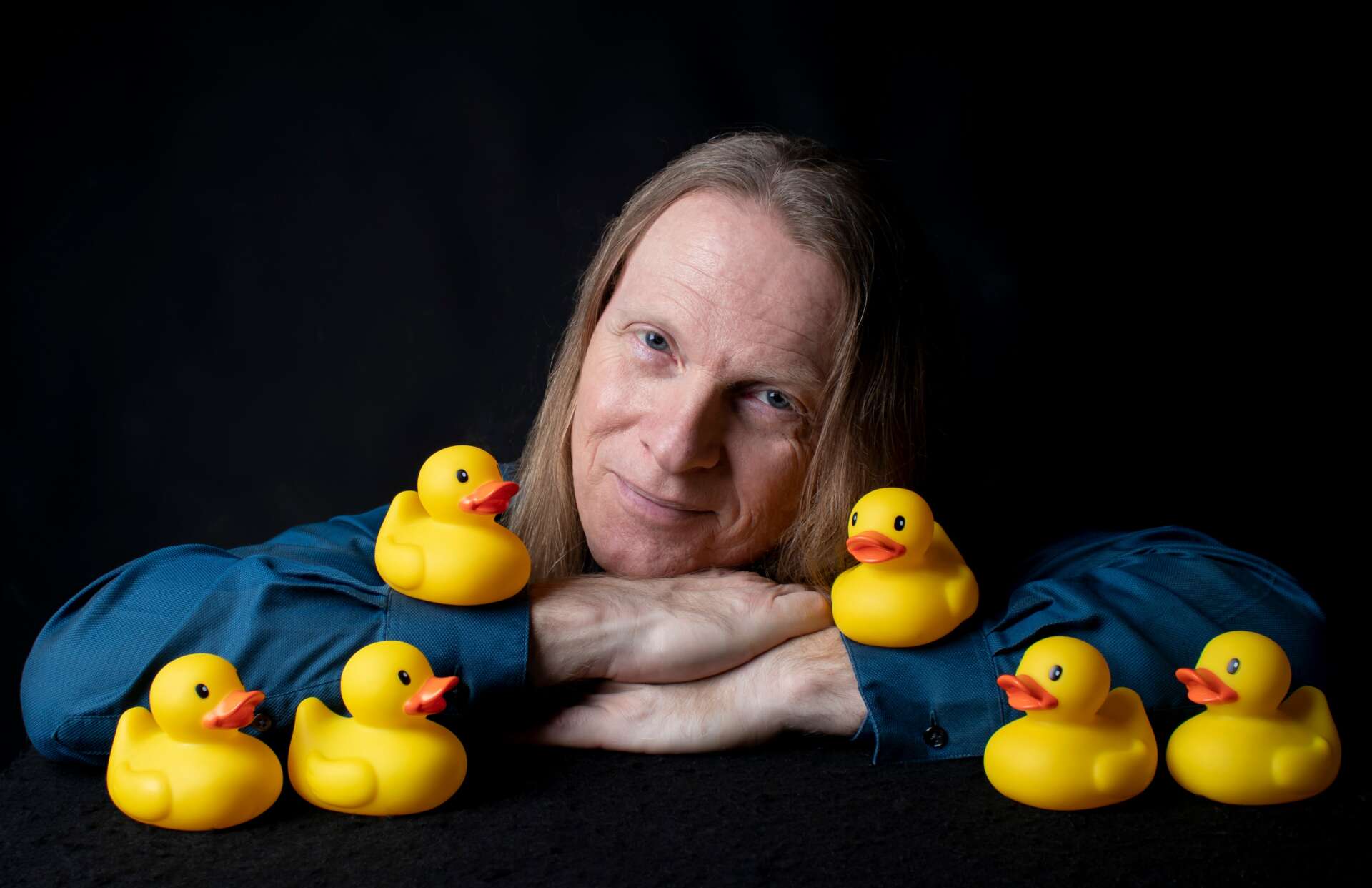Alright – so today we’ve got the honor of introducing you to Kevin Grass. We think you’ll enjoy our conversation, we’ve shared it below.
Kevin, thanks for taking the time to share your stories with us today Let’s jump right into how you came up with the idea?
From about 2000 to 2019, my artwork consisted of hyper-realistic figure paintings and landscapes. The landscapes were doing well in the Florida Art in State Buildings program, but in about 2001 the calls to artists began looking almost exclusively for work that could be integrated directly into the facilities, such as mosaics, tile pieces, fountains, and glass. Figure paintings were never easy to sell because they were very expensive images with imagery that dealt with current social issues, and by 2019 sales were almost non-existent. I knew it would be futile to continue to add to the existing bodies of work, so I took a little break from them and decided instead to complete demonstration paintings that I did from still lifes when teaching my college painting courses. I was getting really tired of the subjects that I set up for the students, so for one of my demos I set up a composition with small yellow rubber ducks, which eventually became my first painting in the “Lame Ducks” series, “Getting All Your Ducks in a Row.” As I was finishing the work at home, my wife, son, and I came up with about 30 different puns using the words duck, quack, bird, and fowl. I realized that I was really onto a good idea for a new series of paintings, and the title “Lame Ducks” seemed the most appropriate since the ideas are based upon lame puns related to ducks. Unlike the figure and landscape paintings, the humorous, colorful images in the “Lame Ducks” were much easier to market and lent themselves well to a wide variety of merchandise. I have heard again and again that you need to find a niche in order to succeed as an artist, and I had definitely found something original and unique.


Great, appreciate you sharing that with us. Before we ask you to share more of your insights, can you take a moment to introduce yourself and how you got to where you are today to our readers.
I grew up in Ste. Genevieve, Missouri, a small river town about an hour southeast of St. Louis. Since there were no art supply stores nearby, my father, who worked as a grocery clerk, brought brown paper bags home for me to use as drawing paper. Using #2 pencils and ball-point pens, I worked obsessively without instruction to master representational drawing skills. Early subjects ranged widely, including narrative fantasy, landscapes, and traditional portraits.
I was introduced to painting on canvas at the age of 10 by my elementary school art teacher. After experimenting with oil and acrylic paints, I decided that I preferred the latter because acrylics dried quickly and did not required toxic thinners. It was not unusual to see me outdoors working on paintings with my typical array of supplies – Liquitex acrylics, canvas panels, cheap hobby brushes, and paper plate palettes.
In high school, I created a wide variety of commissioned works, ranging from portraits and landscapes to lettering for campaign signs and car decorations. One of the murals I assisted with in downtown Ste. Genevieve still exists today. It has faded, but shows that I had promise as a representational painter from an early age.
After becoming valedictorian of Ste. Genevieve High School, I began my formal art education at Washington University in St. Louis, Missouri. I started as an architecture student, but my obsession with painting was so strong that I changed my major at the beginning of the second semester of sophomore year. I received my undergraduate degree in drawing and painting in 1990 from Washington University on a full academic scholarship.
At the University of Georgia, I met his future wife, Michaela Oberlaender, in a Northern Renaissance art class. That course had an extensive impact on my life because it also introduced me to the narrative symbolism and the meticulous techniques of the Flemish masters that influence my work today. In my studio classes, I was encouraged to paint loosely and use oil paint, neither of which felt right to me, but it was an important stage in earning my masters of fine art degree.
The fall after receiving my graduate degree, I began teaching art full-time at Gordon College in Barnesville, Georgia. In addition to teaching, I pursued corporate art commissions, regional juried shows, and had my first solo museum exhibition. While teaching was new and exciting, it was always a means for me to be able to paint.
In August 1997, while my wife was expecting our son, I moved my family to the Tampa Bay region to accept a teaching post at St. Petersburg College in Florida. I still teach full-time as a Professor of Art on the Clearwater campus.
i made the switch back to painting in acrylics in 2001, a few years after my son Nicholas was born, because I did not want the toxic fumes in my home. The other reason was because some of the oil pieces showed slight cracks in them after they were varnished, making them look as if they were already as old as the pieces by the Renaissance Masters. It took a while for me to be as skilled in acrylics as in oils, but now if you look at works in both media side by side, it is difficult to distinguish between them based on the medium alone.
Corporate and Percent for Art sales began to dry up in 2001 after the terrorist attacks on 9/11, so I began to focus my attention on figurative pieces that comment upon social issues of the day. These complex, thought-provoking images were well represented in juried and invitational regional and national exhibitions, galleries, and prestigious art publications. Crowds at international art fairs, such as SPECTRUM Miami and Artexpo in New York, were especially receptive to the work. The feedback about my work at these shows, with over 30,000 visitors, influenced themes for future artworks.
Late in 2019, as painting sales almost completely ceased and storage space began to run out in his studio, I decided that something needed to change. “Lame Ducks” is series of smaller, less complex images that retain the humor, narrative, and technical approach of the more involved figure paintings, using rubber ducks as the common thematic element. These visual puns are colorful, fun, and lend themselves more easily to marketing and commercial applications. The paintings are accompanied by a whole series of products available at the website www.lameducks.net.


Looking back, are there any resources you wish you knew about earlier in your creative journey?
I wish that I had the opportunity to study at one of the classical ateliers. Few of these programs existed when I was ready to begin my undergraduate education and, if I had known about them, I probably would not have gone that route because a college education was seen as the way to set yourself up for success. The problem with a college art education is that the quality of instruction is very uneven. While I believe that a few of my professors were pivotal in my development as an artist, most of the instruction focused more upon concept that it did upon execution. I never saw demonstrations in any of my drawing or painting classes, so any technical advances that I made were the result of a lot of trial and error. Atelier programs focus their efforts entirely on the technical aspects of art-making, beginning with a strong foundation in academic drawing that gradually progresses into painting from casts and the human figure. Frequent and thorough demonstrations accompany each project, and instructors usually continue to work on these pieces as their students are working. I believe that such a program would have given me the technical edge that I needed early in my career, making it easier to stand out from my contemporaries and succeed as a fine artist.

Is there something you think non-creatives will struggle to understand about your journey as a creative?
For me, being an artist isn’t a choice – it is an obsessive addiction. I really liked the architecture program at Washington University, but I often tried to get assignments finished early so that I could complete small acrylic paintings and/or pencil drawings. When I stood back and took a look at what I was doing, I knew I had to become an art major. Since then, my compulsion to make art has become more intense. If I go without painting for longer than 3 weeks (and demos that I do for students don’t count), I actually go through symptoms similar to withdrawal. My wife has actually had to point that out on several occasions, which prompted me to start another painting. So, it isn’t so much about the money, but having a steady income from the artwork would certainly be nice.

Contact Info:
- Website: www.kevingrass.art
- Instagram: https://www.instagram.com/grass.kevin
- Facebook: https://www.facebook.com/KevinGrassFineArt
- Twitter: https://twitter.com/fineartfan


